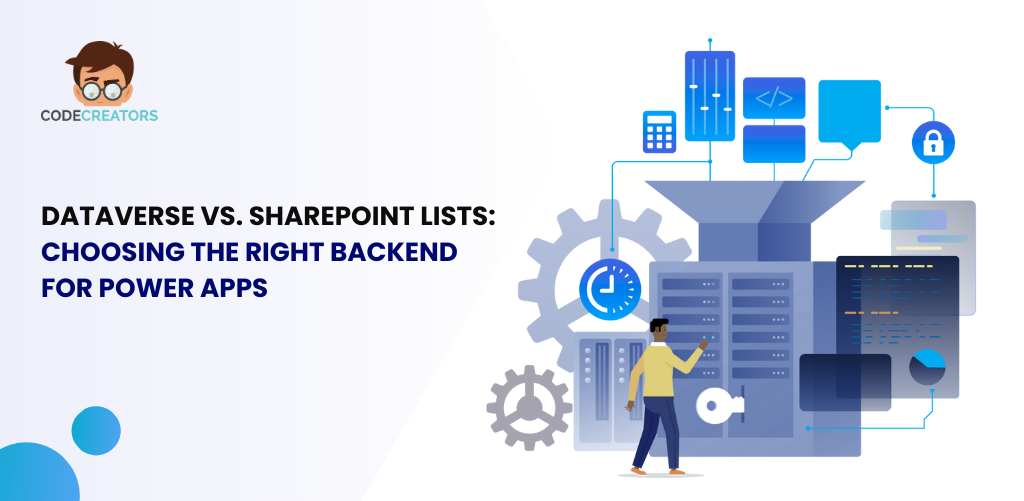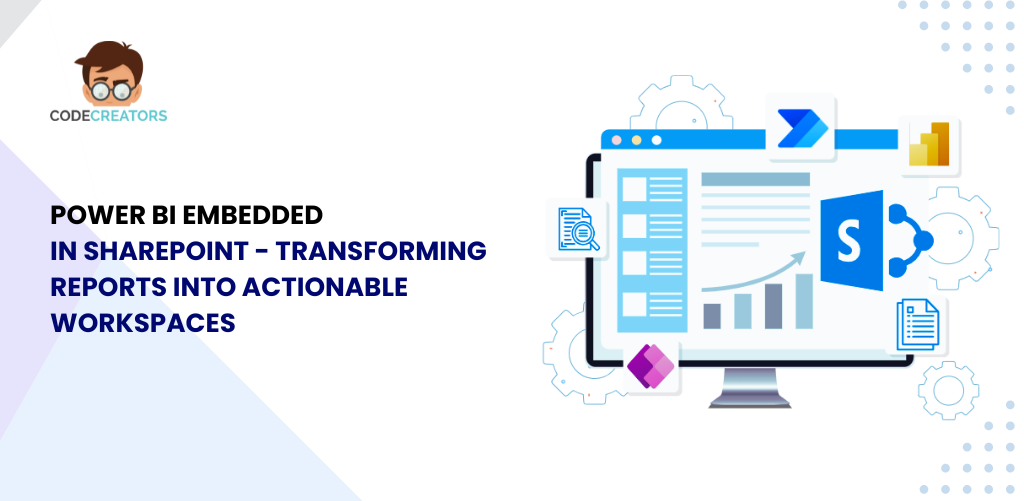Security Risks in SharePoint Migration: What You Need to Know

Migrating a SharePoint environment whether from on-premises SharePoint to SharePoint Online or from a previous version to SharePoint’s latest version comes with advantages for your organization. It allows for easier collaboration, better access to data, as well as new features. It also brings some security risks that can compromise your system during the migration process. If left unhandled, such risks may result in data loss, compliance violations, or disruption of operations. In this article we will discuss some of the common security risks SharePoint migration brings with it and some effective ways to deal with them.
1. Risk of Data Loss During SharePoint Migration
Any SharePoint migration poses serious threats, among which are the loss of data. The different SharePoint environments host really important businesses information, be it financial or employee data. With incomplete or poorly done migration and backup processes, part of this information might be lost.
Risks:
- Incomplete scripts used in migration.
- Errors made by the different migration tools as employed.
- Overwriting of already available data in the target environment.
- Accidental deletion of files belonging to the sample cut being migrated.
How to Mitigate:
Exhaustive backup: Make an entire backup of your current SharePoint environment well before doing the move. In case something goes wrong, you will get it back.
Test the Migration Process: Perform trials with a chunk of a limited data sample to unearth potential problems before a full-blown migration exercise.
Use reliable migration tools: Acquire professional SharePoint migration tools, inclusive of data integrity and error-reporting features.
2. Unauthorized Access to Data
Temporary storage of data might be used in these cases – migration, where data moves from one location to another. Moreover, it may cross over networks. To this, it becomes open to unauthorized persons if security controls fail.
Risks:
- Sensitive data can be potentially lost in the transmission process.
- An intermediate repository can provide less security than that given by SharePoint.
How to Mitigate:
Encrypt Any Data During Transfer: For example, HTTPS, which is the latest secure transfer protocol for transmitting data, or TLS.
Limit Access to Migration Tools: Only authorized personnel should have access to migration tools and data.
Secure Storage Areas: Though temporary storage is utilized, it must be within the premises of organizational compliance on security standards.
3. Disruption of Permissions and Access Control
SharePoint systems usually possess complicated permission structures. During the transfer, the configuration and settings can get easily jumbled up or even lost thus exposing or denying access to data for users, who should or shouldn’t have used that data.
Risks:
- Sensitive files may be breached by incidence.
- Flow disruption in the workflow as a result of assigning the wrong permissions.
How to Mitigate:
Documenting Current Permissions: Audit the current permission structure and document it before migration.
Role-based Access Control: Mapping current permissions to roles in the new environment.
Post Migration Validation of Permissions: Conduct thorough testing after the migration to ensure that permission has been applied directly.
4. Phishing and Social Engineering Attacks
The hackers always seem to find possible holes made by the employees when an organization migrates into a new system and manipulates employees into believing that their work environment has incorporated such dubious emails or links. For example, the emails may falsely appear as SharePoint communication.
Risks:
- Access to the new environment without authority.
- Compromise of credentials.
How to Mitigate:
Educate Employees: Employees shall take awareness training about the new migration and detecting such phishing attempts.
Multi-Factor Authentication (MFA): Even if they have hacked or compromised, it should add another layer of security to unauthorized access.
Monitor suspicious activity: Use tools to find and respond to strange patterns of logging in or access.
5. Challenges in Regulatory Compliance
If your organization happens to be within that area of operations of a regulated sector such as healthcare or finance, then it is essential and important to be compliant with data protection laws. Specific examples include GDPR, HIPAA, or SOX. SharePoint migration, that is not executed properly, will compromise compliance.
Risks:
- Impairment of audit trails during SharePoint migration.
- Confidential information accidentally moving to non-compliant areas.
How to Mitigate:
Compliance Partners: Bring in lawyers or compliance professionals at the early stages of conception.
Preserve Audit Trails: Use migration tools that will create and maintain a pretty source-to-source detailed track of what data goes where and what changes are made.
Verify Storage Locations of Data: Check compliance of the target SharePoint with the applicable regulations.
6. Data Integrity Issues
It is the state of data that refers to its accuracy and consistency. Migrating files in a poorly executed migration process introduces errors and causes duplication.
Risks:
- Corrupted data may be a cause for failure in business processes.
- Make or Break Judgments: This is more likely to happen if the data is not dependable.
How to Mitigate:
Migration Tools with Error Reporting: These tools flag instances of incomplete transfers, failed data transmission, and other areas where loss or corruption has occurred.
Post-Migratory Data Validation: Similar samples of data were collected from both the old and new environments for comparisons.
Revert Plan Preparation: Be ready to revert to the original environment If issues are found.
7. Unsecured Customizations
Migrations can create tough security hassles with workflows, third-party plugins, or web parts. Old, unsupported custom solutions may not integrate with the new SharePoint environment but can pose a threat when migrating.
Risks:
- Custom solutions could trigger an inadvertent data breach.
- Outdated third-party tools will not have all the necessary security updates.
How to Mitigate:
Evaluation of Customizations: Consideration of all custom solutions before migration into a review and analysis.
Upgrade or Replace Old Tools: All third-party add-ons should be linked to the most recent version or replaced with something recognized and supported.
Post-Migration Testing: All custom workflows and tools should be tested in the environment to ensure they work securely.
8. Downtime and Business Disruptions
Extended downtime or migration-related interruptions may not be tried risks, but these are indeed opportunities for an associated risk creation. It is quite common that people’s need makes them turn to unapproved tools or platforms during such periods, translating their possible use of unapproved tools or communicating on unapproved platforms into possible data leakages.
Risks:
- Shadow IT that makes great use of such tools without security measures in place.
- Reduced monitoring and thus making systems more amenable to attack during the period of SharePoint migration.
How to Mitigate:
Minimal downtime plans: During weekends or off-peak times, schedule the migration.
Alternatives: Provide employees temporary approved tools for use when their SharePoint environments are restricted.
Monitor Activity Closely: Increase vigilance during the SharePoint migration period to detect unauthorized activity.
9. Insufficient User Training
New employees often compromised security by mismanagement of sensitive data or ignored best practices while using the new system.
Risks:
- Employees may save the data in unsecure locations.
- Misuse in security features like sharing permissions.
How to Mitigate:
Held Training Seminars: Train the employees on a feature and the proper security practice for each data.
Create User Manuals: Clear instructions for common tasks in new SharePoint environment.
Encourage Feedback: After commencing the system, internal users should report problems or questions regarding the new system.
10. Overlooking Shadow Data
Shadow data is data that are kept in obscure or unconventional places such as a private personal drive or shared folders. In this data migration, it can be forgotten, thus leaving it unprotected.
Risks:
- Some vital files are still left in the old environment, neither being monitored nor encrypted.
- Shadow data may simply slip out of the organization without it having any security measures in place.
How to Mitigate:
Carry out a Full Audit: Identify every data source before SharePoint migration.
Include Shadow Data in Migration Plans: Invisible or unofficial data repositories must be brought into the fold of the migration process.
Enforce Centralized Storage: Teach the employees that SharePoint must be the repository for all data.
11. Insufficient Post-Migration Monitoring
Even though the SharePoint migration process will be finished, the security threats will exist if the new SharePoint environment is not monitored properly. This means that potential cyber criminals could use the new flaws that the migration process may have introduced.
Risks:
- Undetected malware and/or security breaches in a new environment.
- Insufficient monitoring of all the changes that may be made or unauthorized access.
How to Mitigate:
Carry Out the Deployment of the Tracking Tools: Deploy SharePoint imagined security measurement implementation tools or other benefits from employing the outside solutions.
Conduct Security Audits: Inspect the system regularly to check for a potential vulnerability or unauthorized activities.
Respond Swiftly to Feedback: Investigate the problematic feedback given by the users to minimize the risk exposure.

Conclusion
The SharePoint migration process entails complex planning and implementation that can minimize the security risks involved. The problems go from data loss and unauthorized access to compliance and downtime, and they can be bad. However, organizations can achieve smooth migration from a secure environment with preventative measures and understanding of such risks.
Invest in the right tools, build all stakeholders into your processes, and follow a healthy awareness in a post migration environment and your organization will enjoy the return on investment without compromise to security in the new SharePoint environment. With such efforts, you protect sensitive data, improve productivity, and create trust across the organization.
As the CTO at Code Creators, I drive technological innovation, spearhead strategic planning, and lead teams to create cutting-edge, customized solutions that empower clients and elevate business performance.



